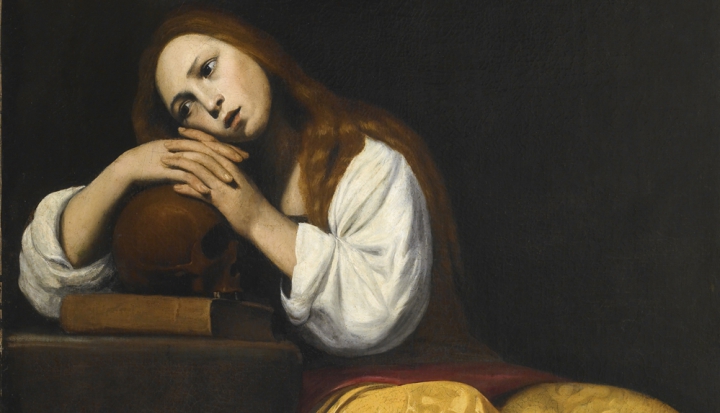In February I went on a pilgrimage to the Holy Land. The sights and sounds of Galilee were captivating. Sitting on the Sea of Galilee, I closed my eyes and tried to imagine what it must have been like to see Jesus walk on water, to hear him preach or call my name. As we traveled through Capernaum and Nazareth to Bethlehem and Jerusalem, it felt as if we were with those first disciples looking for Jesus and praying to understand. In these places I found myself accompanied by someone I’d long admired: Mary of Magdala.
Readers of Scripture first meet Mary Magdalene during Jesus’ preaching and healing ministry in Galilee as someone healed “from whom seven demons had gone out” (Luke 8:2). Later all the gospels mention her in the litany of women who traveled with Jesus to Jerusalem. All four gospels name her as a witness to both the crucifixion and the empty tomb. In John’s gospel Mary Magdalene is the first person to meet the resurrected Jesus and is thus charged with telling the others. For this she is given the title “Apostle to the Apostles.”
In a world where women were not considered reliable witnesses, it is women upon whom our knowledge of the death and resurrection of Jesus relies. The women of the gospels, especially Magdalene, have long been maligned, minimized, or simply missing from the way we envision Jesus’ followers.
I have spent almost all my life in Catholic education, starting with preschool. In grade school we learned about Mary Magdalene, but even in the last 20 years Catholic school children are still taught long-debunked stereotypes about the women to whom Jesus first appeared. It was not until my freshman year in college that I learned that there is no biblical evidence for labeling Mary Magdalene a prostitute. The gospel message of mercy is unequivocal and there are accounts of prostitutes healed and forgiven by Jesus. But there is no biblical evidence to say Mary of Magdala was one of them. So why the persistent need to sexualize her? In light of the #MeToo movement, is it really that shocking that she’s so quickly reduced to a symbol of sex?
Mary Magdalene has long fascinated believers and secular society. Can men and women truly be friends? Long before When Harry Met Sally . . . believers and nonbelievers alike have struggled with Mary of Magdala and her friendship with Jesus of Nazareth.
Even today, at the excavation site of the first-century synagogue at Magdala, the women of the gospels occupy the small side chapels of the worship center, the central space reserved for Peter. In the very place Mary Magdalene likely heard Jesus preach for the first time, she and the other women witnesses still remain on the periphery.
“Indeed,” says Pope Francis in his new exhortation on holiness, “in times when women tended to be most ignored or overlooked, the Holy Spirit raised up saints whose attractiveness produced new spiritual vigor and important reforms in the church. . . . But I think too of all those unknown or forgotten women who, each in her own way, sustained and transformed families and communities by the power of their witness.” Beginning with Magdalene and continuing through Christian history, women persist, but their contributions are often ignored. As I walked the way of the cross in their footsteps, I prayed in gratitude. Their fidelity and witness continue to teach us what it means to be a pilgrim church called to follow God. Even today, as she walks with us in faith, she persists.
This article also appears in the July 2018 issue of U.S. Catholic (Vol. 83, No. 7, page 10).
Image: via Wikimedia Commons











Add comment